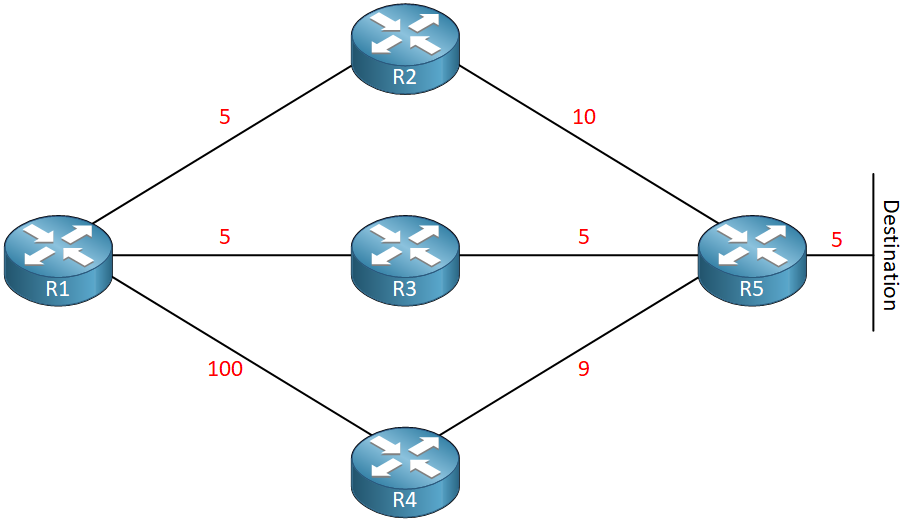EIGRP unequal cost load balancing
Just like OSPF or RIP, EIGRP can do equal-cost load balancing. Unlike these other routing protocols, EIGRP can also perform unequal load-balancing.
Unequal cost load balancing can take place between the successor and all of the feasible successors to a particular destination. If a route is not a feasible successor, it does not participate in unequal cost load balancing. For more information about feasible successors, take a look at EIGRP Feasibility condition.
Refer to the following topology:

From the point of view of R1, the path to the destination via R3 is the successor. The path to the destination via R2 is not a feasible successor since it does not fulfill the feasibility condition. The path via R4 does fulfill the feasibility condition. Therefore, unequal cost load balancing can take place to the destination via R3 (successor) and R4 (feasible successor).
Unequal cost load balancing can be achieved using the variance command. Traffic will be load balanced in a proportional way, if you have a feasible successor that has a feasible distance that is 5 times worse than the successor then traffic will be shared in a 5:1 way.
Links
https://networklessons.com/eigrp/eigrp-unequal-cost-load-balancing
https://networklessons.com/eigrp/eigrp-variance-command-example